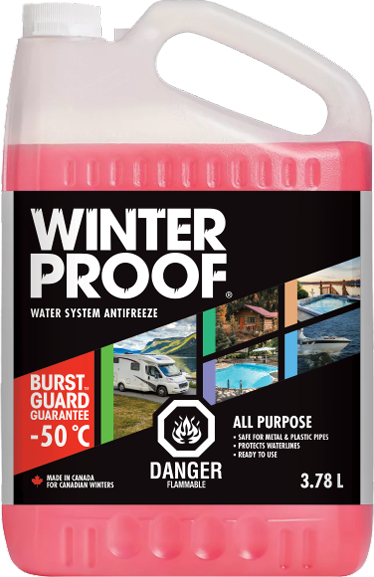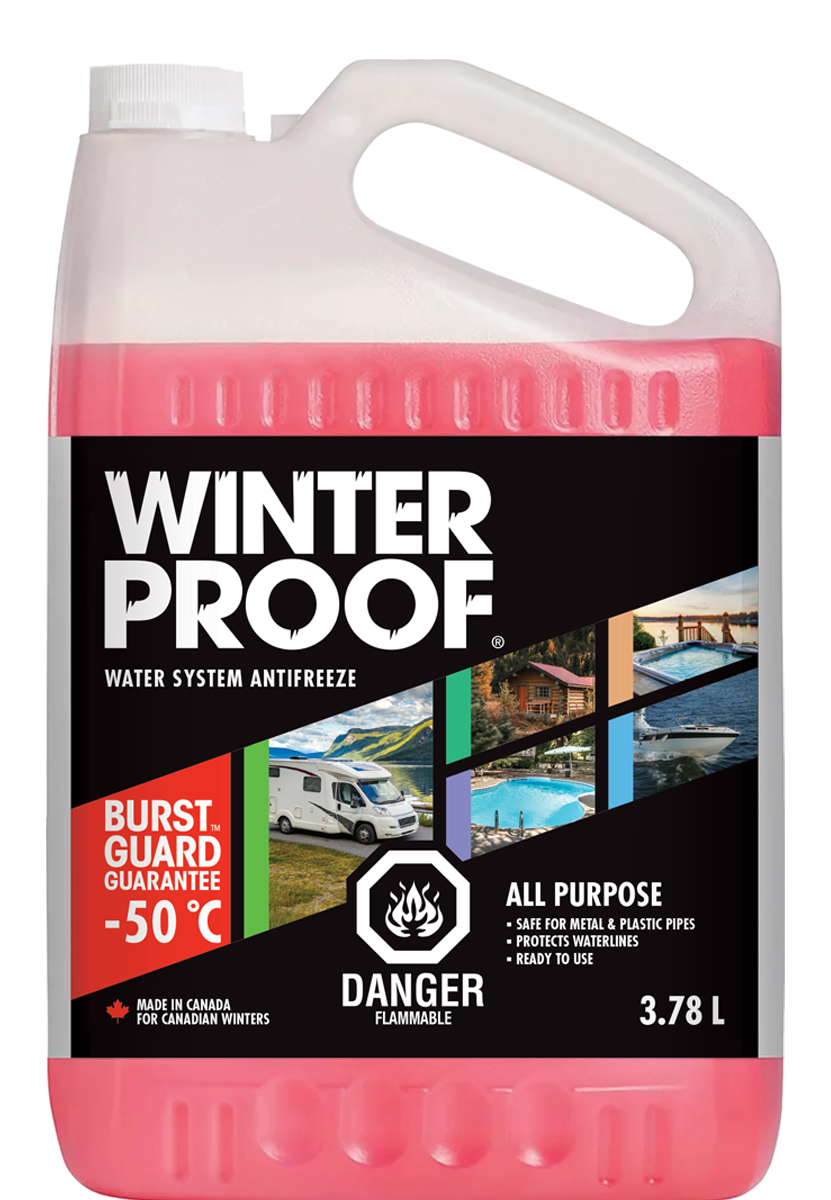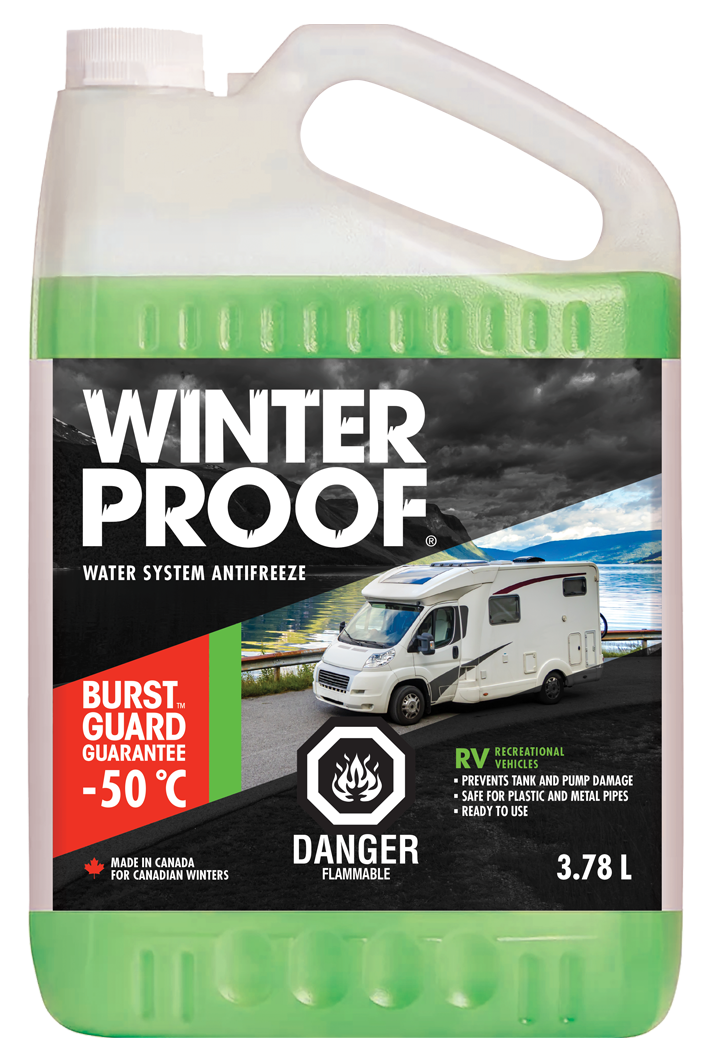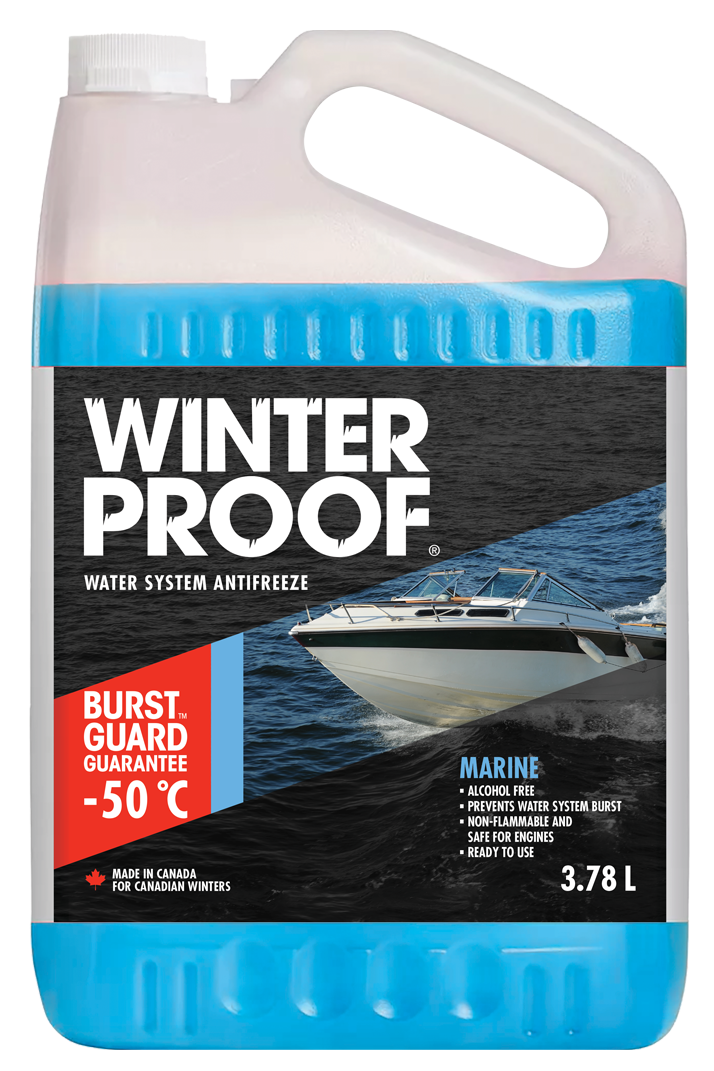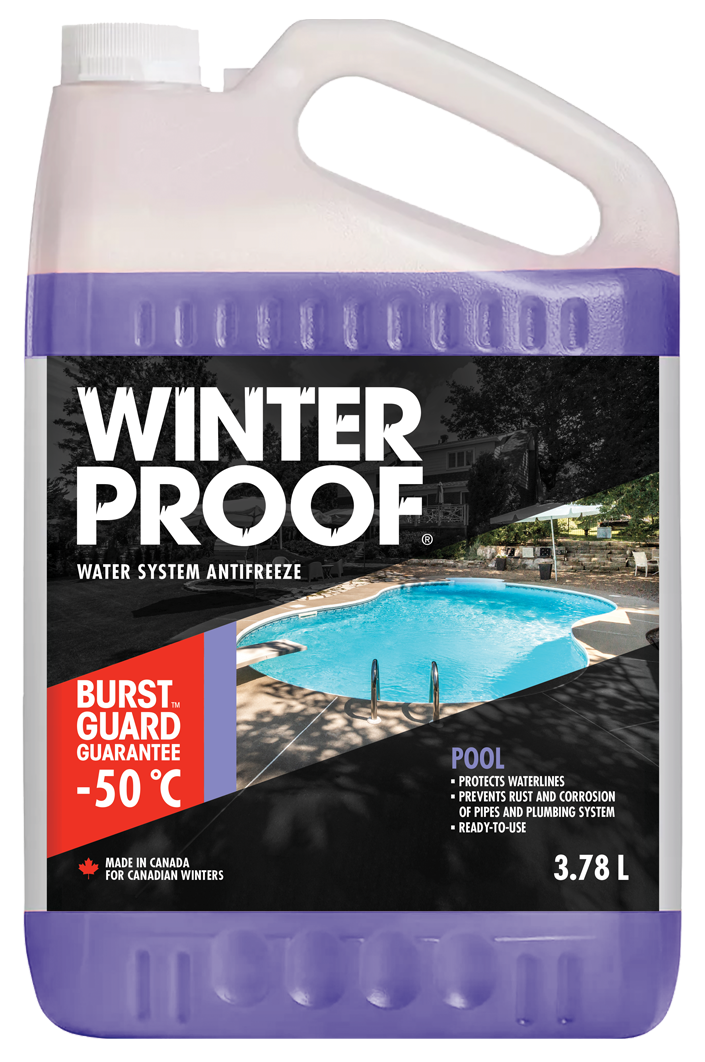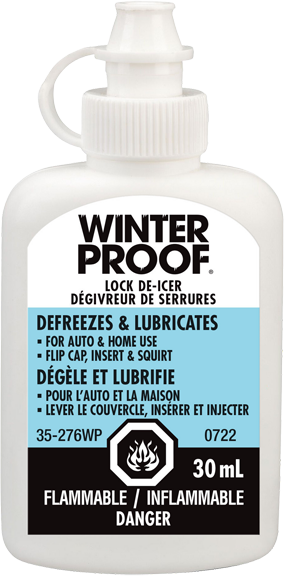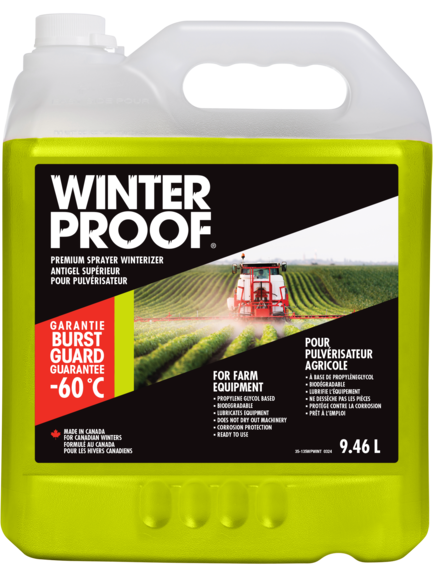WINTERPROOF™ Water System Antifreeze provides you with peace of mind:
- Formulated for various applications.
- Total water system protection
- Prevents waterline bursts
- Safe for plastic and metal pipes
- Lubricates waterlines, pipes, and seals
- Ready to use formula.
Made for Canadian winters
Product Specifications
| Item # | Unit/Case Pack | UPC | SCC14 |
|---|---|---|---|
| 35-364WP | 3.78 L | O56438907268 | 40056438907266 |
| 35-365WP | 9.46 L | O56438907275 | 50056438907270 |
| 35-368WP | 18.9 L | 056438909538 | NA |


